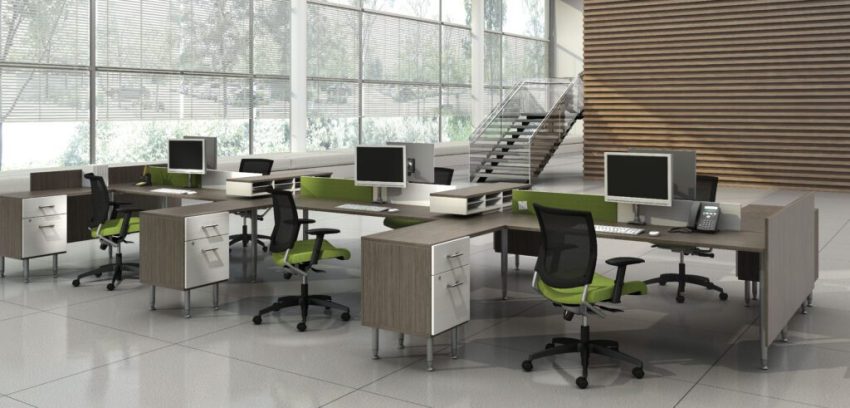Creating a productive and comfortable workspace is essential for any business. The right office furniture not only enhances the aesthetic appeal of your office but also plays a crucial role in the efficiency and well-being of your employees. In this guide, we’ll explore the key factors to consider when selecting office furniture and how to make choices that support a dynamic and inspiring work environment.
1. Ergonomics: Prioritizing Health and Comfort
One of the most important aspects of office furniture is ergonomics. Ergonomic furniture is designed to support the body’s natural posture, reduce strain, and prevent discomfort over long periods of use. Here are some key pieces to consider:
- Ergonomic Chairs: Look for chairs with adjustable height, lumbar support, and armrests. A good chair promotes better posture and reduces the risk of back pain.
- Height-Adjustable Desks: These desks allow users to switch between sitting and standing, promoting movement and reducing the negative effects of prolonged sitting.
- Keyboard and Monitor Stands: Proper positioning of keyboards and monitors can prevent repetitive strain injuries and eye strain.
2. Functionality and Flexibility
Office furniture should be functional and adaptable to different needs. Consider these versatile options:
- Modular Furniture: Modular desks and storage units can be reconfigured as needed, making them ideal for growing businesses or dynamic work environments.
- Multi-Purpose Furniture: Items like foldable desks, stackable chairs, and mobile storage units offer flexibility and can be easily rearranged to accommodate various activities.
3. Aesthetic Appeal and Branding
The look and feel of your office can significantly impact employee morale and client perceptions. Choose furniture that reflects your company’s brand and culture:
- Color Scheme: Select furniture that complements your office’s color palette. Bright colors can energize the space, while neutral tones can create a calm, professional atmosphere.
- Design Style: Whether you prefer a modern, minimalist look or a more traditional style, ensure your furniture choices are consistent with your overall design vision.
4. Sustainability and Quality
Investing in high-quality, sustainable furniture is not only good for the environment but also for your business in the long run. Look for these features:
- Durable Materials: Furniture made from high-quality materials like solid wood, metal, and high-grade plastics will last longer and withstand heavy use.
- Eco-Friendly Options: Choose furniture made from recycled or sustainable materials, and consider manufacturers with green certifications.
5. Storage Solutions
Effective storage solutions are essential for maintaining an organized and clutter-free workspace. Consider the following:
- Cabinets and Shelving: Provide ample storage for documents, supplies, and personal items. Adjustable shelving units can accommodate items of varying sizes.
- Mobile Storage: Rolling carts and mobile cabinets can be easily moved around the office, offering flexible storage options.
6. Personalization and Employee Input
Involving employees in the selection process can lead to a more personalized and satisfying work environment. Here’s how:
- Surveys and Feedback: Gather input from employees about their furniture preferences and needs. This can help identify specific requirements and improve overall satisfaction.
- Customization: Offer options for personalizing workstations, such as adjustable desk accessories, personalized storage solutions, and decorative elements.
Conclusion
Choosing the right office furniture is a critical investment in your company’s productivity, employee well-being, and overall success. By prioritizing ergonomics, functionality, aesthetic appeal, sustainability, storage, and personalization, you can create a workspace that not only looks great but also supports a dynamic and efficient work environment.
